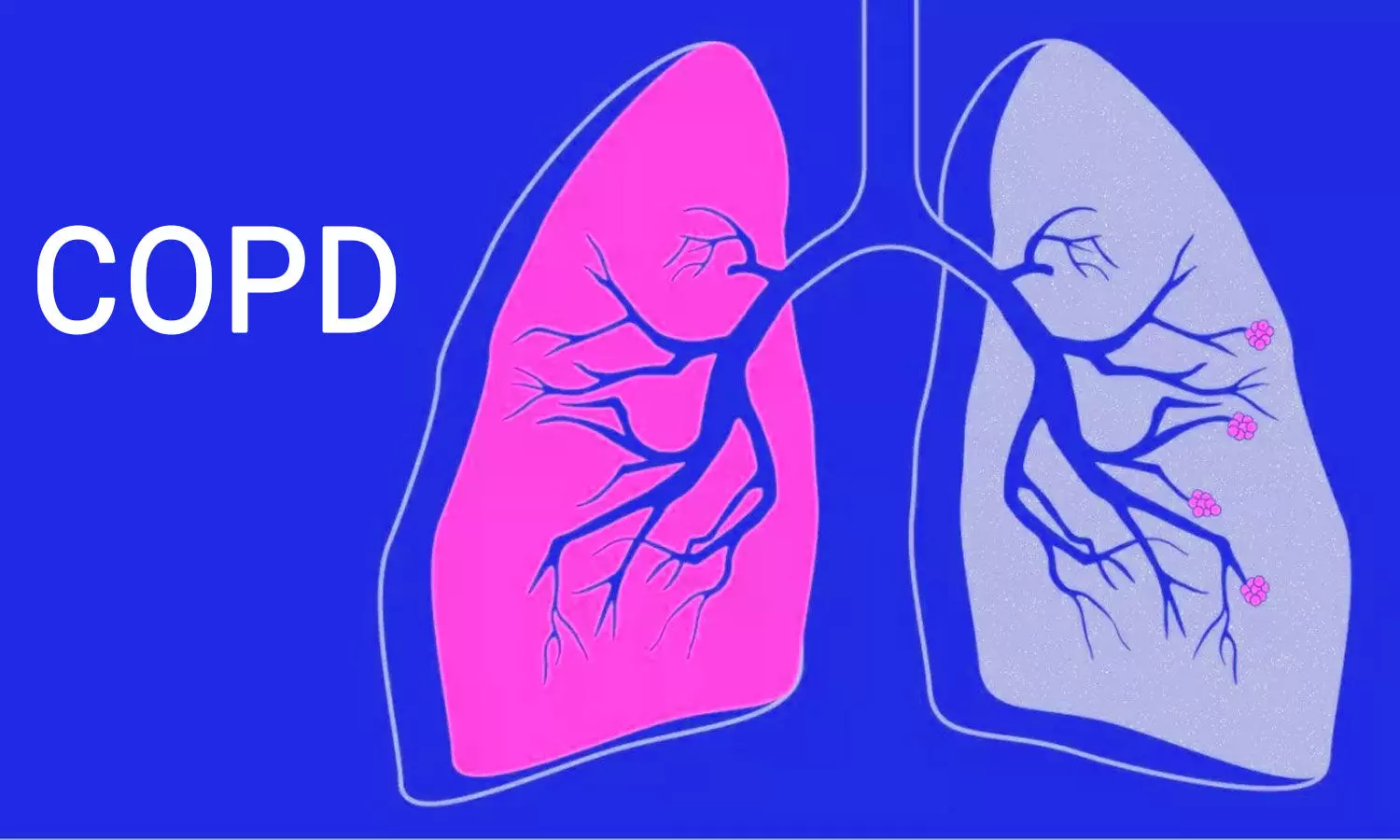Survey identifies top factors Americans blame for declining focus and attention
Powered by WPeMatico
Powered by WPeMatico
Powered by WPeMatico
Powered by WPeMatico
Powered by WPeMatico

Researchers have indicated that early rhythm control (ERC) therapy significantly influences reducing the risk of ischemic stroke in cancer survivors with atrial fibrillation (AF), yielding strong evidence in favor of an intensive rhythm management approach in such at-risk patients. The study was published in the Journal of the American Heart Association by Seokmoon Han and fellow researchers. These findings emphasize the importance of incorporating ERC approaches in standard cardiovascular management among AF-presenting cancer survivors.
This population-based, large-scale observational study employed the Korean National Health Insurance Service database. Adults aged 20 years or older who were newly diagnosed with atrial fibrillation during 2009-2018 comprised the cohort. The patients were divided into two groups: the ERC group (which received rhythm control treatment within one year after diagnosis) and the usual care group (which received usual or rate-control-oriented treatment).
Researchers specifically examined outcomes in cancer survivors, those with a cancer diagnosis at least five years before the study, to see if early rhythm intervention was also beneficial for this population.
Out of the total number of 591,692 patients with AF, 18,747 (3.2%) were cancer survivors with a mean age of 65.7 years, and 53.7% of the study group were men. The participants were followed up for an average duration of four years to track the occurrence of ischemic stroke, adjusting the results for variables such as age, comorbidities, race, and complications at the time of AF diagnosis.
Key Findings
• Total participants: 591,692
• Cancer survivors: 18,747 (3.2%)
• Mean age of participants: 65.7 years
• Gender distribution: Male 53.7%Follow-up duration: Mean 4 years
• Total strokes documented: 52,500
• Within cancer survivors: 1,338 strokes
• Within noncancer patients: 51,182 strokes
Stroke risk reduction with ERC:
• Within cancer survivors: Adjusted Hazard Ratio (aHR) 0.67 (95% CI: 0.58–0.76)
• Within noncancer patients: aHR 0.76 (95% CI: 0.74–0.78)
The results of this Korean national study corroborate that earlier rhythm control is correlated with a significant decrease in the risk of ischemic stroke in cancer survivors with atrial fibrillation. These findings support a more vigorous and active role in rhythm management treatment for patients with a past history of cancer. Incorporating ERC into routine AF management in this subgroup may result in better stroke prevention and overall quality of life.
Reference:
Han S, Lee SR, Choi EK, Kim B, Han KD, Choi J, Lee KY, Ahn HJ, Kwon S, Oh S, Lip GYH. Early Rhythm Control of Atrial Fibrillation in Cancer Survivors: A Nationwide Population-Based Study. J Am Heart Assoc. 2025 Jun 23:e040908. doi: 10.1161/JAHA.125.040908. Epub ahead of print. PMID: 40551338.
Powered by WPeMatico

Researchers have found in a new retrospective cohort study that vitamin D supplementation led to significant improvements in recognition memory, overall cognitive function, and systolic blood pressure in older adults with hypertension and mild cognitive deficits.
These results suggest potential clinical benefits of addressing vitamin D insufficiency in this population and support the need for further research through prospective trials.
The study revealed that seniors (≥65 years) with hypertension and mild cognitive impairment, vitamin D supplementation (≥5,000 IU/day for ≥6 months) improved recognition memory (+3.1 vs +1.2 points) & lowered systolic BP (−12.8 vs −7.1 mmHg) versus minimal or no supplementation. Benefits were greater in those with MoCA scores <22 (+2.9) and baseline vitamin D <20 ng/mL (+2.8). 3.8% in the supplementation group reported mild hypercalcemia
Older adults frequently experience vitamin D deficiency, which has been linked to both cognitive decline and hypertension. However, evidence on whether correcting vitamin D insufficiency can improve recognition memory and blood pressure (BP) control in this population remains inconclusive.
A study was done to evaluate the association between vitamin D supplementation and improvements in cognitive function and BP among older adults with hypertension and mild cognitive deficits. They conducted a retrospective review of patient records from individuals aged ≥65 years who had documented hypertension, baseline 25-hydroxyvitamin D (25(OH)D) levels < 30 ng/mL, and mild cognitive impairment (Montreal Cognitive Assessment [MoCA] < 26) or subjective cognitive complaints. Patients were categorized into two groups based on recorded vitamin D supplementation (≥5,000 IU/day for ≥6 months vs. no or minimal supplementation).
Recognition memory, global cognition (MoCA), systolic and diastolic BP, and serum 25(OH)D levels were compared between groups. Results: Among 153 eligible records, those in the Supplemented group showed greater gains in recognition memory (+3.1 ± 2.4 vs. +1.2 ± 2.0 points; p = 0.01) and a larger decrease in systolic BP (−12.8 ± 7.2 vs. −7.1 ± 6.8 mmHg; p = 0.03). Sensitivity analyses confirmed these benefits. For instance, in adjusted multivariable regression, recognition memory improved by an additional +1.8 points (95% CI 0.9–2.7; p = 0.002) and systolic BP fell by −10.7 mmHg (p = 0.01) in the Supplemented group. Multivariable regression and propensity-score-matched analyses yielded comparable cognitive and blood-pressure benefits. Stratified analyses indicated stronger responses in those with MoCA < 22 (+2.9 points in recognition memory; p = 0.01) and in participants with baseline 25(OH)D < 20 ng/mL (+2.8 points; p = 0.003). Both men and women derived similar cognitive and BP benefits.
Mild hypercalcemia occurred in 3.8% of supplemented patients vs. 1.3% of comparisons. In this retrospective cohort, vitamin D supplementation was associated with notable improvements in recognition memory, global cognition, and systolic BP among older adults with hypertension and mild cognitive deficits. These findings highlight the potential clinical benefits of correcting vitamin D insufficiency in this high-risk population, warranting further investigation in prospective trials.
Reference:
Tan, L., Li, H., & Zhao, L. (2025). Impact of vitamin D supplementation on cognitive impairment in elderly individuals with hypertension. Frontiers in Neurology, 16. https://doi.org/10.3389/fneur.2025.1571078
Powered by WPeMatico

Right ventricular (RV) strain by cardiac magnetic resonance imaging (MRI) has been reported to yield robust prognostic data among patients with heart failure with preserved ejection fraction (HFpEF). A recent study published in Radiology by Leyi Zhu and colleagues. Such evidence underlies the inclusion of RV strain analysis within cardiac risk stratification in HFpEF patients and a superior prognostic accuracy compared with traditional clinical or imaging markers.
HFpEF represents almost half of all heart failure, and whereas left ventricular function has received most of the attention in terms of research and treatment, increasing evidence indicates that RV function is also extremely important in disease progression and mortality. But up to this point, its direct prognostic utility in HFpEF has not been well established.
This retrospective analysis compared two independent cohorts of patients with HFpEF who received cardiac MRI from January 2010 through June 2021. The development cohort was 1019 patients (mean age: 56.9 years ± 12.3; 710 men), and the validation cohort was 273 patients (mean age: 55.3 years ± 14.0; 191 men). The major outcome measured was all-cause mortality.
Cardiac MRI feature-tracking was utilized to quantify RV global longitudinal and circumferential strain. Cox regression models assessed the predictive value of these parameters on death, adjusting for clinical variables and standard imaging parameters. Median follow-up times were 7.8 years for the development cohort and 3.9 years for the validation cohort.
Main Findings
• 103 patients out of 1019 (10.1%) died during follow-up in the development cohort.
• In the validation cohort, 9 (3.3%) of 273 patients died.RV global longitudinal strain was associated with an adjusted hazard ratio (HR) of 1.07 per 1% increase in strain (95% CI: 1.02–1.12; P = 0.005).
• RV circumferential strain was associated with an adjusted HR of 1.13 per 1% increase (95% CI: 1.05–1.21; P< 0.001).
• The complete prognostic model with RV strain had excellent discrimination with a C-index of 0.794 in the development cohort and 0.782 in the validation cohort.
• In a subset with more advanced tissue characterization (T1 mapping), RV strain remained predictive of death after controlling for native T1 values and extracellular volume fraction (P<0.05 for all models).
Right ventricular global longitudinal and circumferential strain from cardiac MRI were independent, potent predictors of all-cause mortality in HFpEF patients. These findings suggest that RV strain is a more accurate prognosticator than conventional risk factors or routine imaging markers. Incorporating Right ventricular strain analysis into standard cardiac MRI evaluations could greatly enhance risk stratification and patient care in HFpEF.
Reference:
Zhu, L., Zhang, H., Jiang, M., Xu, J., Zhou, D., Wu, W., Yang, W., Wang, Y., Yin, G., Sirajuddin, A., Arai, A. E., Zhang, Q., Zhao, S., & Lu, M. (2025). Right ventricular strain improves cardiac MRI-based prognostication in heart failure with preserved ejection fraction. Radiology, 315(3), e243080.https://doi.org/10.1148/radiol.243080
Powered by WPeMatico

Digital inhalers may help predict impending acute exacerbations of chronic obstructive pulmonary disease (COPD), according to a new study. The study is published in the May 2025 issue of Chronic Obstructive Pulmonary Diseases: Journal of the COPD Foundation, a peer-reviewed, open-access journal.
COPD is an inflammatory lung disease, comprising several conditions, including chronic bronchitis and emphysema, and can be caused by genetics and irritants like smoke or pollution. The disease affects more than 30 million Americans and is the fourth leading cause of death worldwide.
Exacerbations, or flare-ups, can cause accelerated loss of lung function, a decrease in quality of life, and reduce a person’s physical function and activity. More than 50% of people with COPD experience at least one acute COPD exacerbation within four years of an initial COPD diagnosis. Increased respiratory rates and decreased lung volumes are early signs of an exacerbation.
This new study examines how digital inhalers using remote monitoring data can help predict and identify early or impending COPD exacerbations. The digital inhaler used in this study measured peak inspiratory flow, inhalation volume, inhalation duration, time to peak inhalation, and inhaler use. The study examined whether the data collected by the digital inhaler could identify a possible early-stage exacerbation.
“While this study examined a small group of participants, the remote monitoring data showed people experienced significant decreases in the amount of air they inhaled and how long that inhalation lasted in the approximately two weeks prior to experiencing an exacerbation,” said M. Bradley Drummond, M.D., MHS, professor of medicine in the Division of Pulmonary Diseases and Critical Care Medicine at the University of North Carolina, Chapel Hill School of Medicine and lead author of the study. “As these remote monitoring technologies get more advanced, we can help both patients and health care providers identify exacerbations earlier, which allows us to provide better exacerbation management and improve health outcomes.”
Reference:
Drummond MB, Hemphill CC, Hill T, Boe A, Yu D, Ohar JA. Use of a digital inhaler to assess COPD disease variability and identify impending acute COPD exacerbations: a pilot study. Chronic Obstr Pulm Dis. 2025; 12(3): 250-259. doi: http://doi.org/10.15326/jcopdf.2024.0555
Powered by WPeMatico

According to a recent meta-analysis published in eClinicalMedicine, antibiotic use during pregnancy or in early childhood significantly increases the risk of developing atopic dermatitis (AD) in children. The study analyzed 39 cohort studies involving pregnant women and children under 5, highlighting a strong association between early antibiotic exposure and this chronic inflammatory skin condition. The study was conducted by Huawei Zhao and colleagues.
Atopic dermatitis occurs in about 2% of adults but is seen in as many as 4% of children, making it a significant atopic condition in children. Antibiotics, one of the most frequently prescribed medications in early life, are frequently used in the first years of life or even prenatally. This broad exposure has raised questions about its effect on immune system development, gut microbiota, and the potential for the development of allergic conditions such as eczema. Although previous studies implied a connection, conclusive results have been out of reach until this latest research.
To examine the possible relationship between antibiotic use and AD in children, researchers undertook a systematic review and meta-analysis. The research examined 39 articles in both English (Scopus, PubMed, Web of Science, Cochrane Library) and Chinese (VIP, CNKI, Wanfang) databases, until the data cut date of May 1, 2025. A random-effects model meta-analysis was utilized to evaluate aggregated data. The review covered 7,487,925 children, making the study one of the largest of its nature. Registration for the study in the PROSPERO database (CRD42024535141) was done.
Key Findings
• Overall Risk: Children exposed to antibiotics at the time of pregnancy or early life had a 22% higher risk of acquiring AD (OR = 1.22, 95% CI: 1.17–1.28) with high heterogeneity (I² = 98.06%)
• Timing of Exposure: Children exposed post-birth were at greater risk of eczema than those exposed during pregnancy.
Influencing Factors: AD risk differed according to:
• Diagnostic criteria employed for AD.
• Race of the child.
• Type and frequency of antibiotic exposure.
• Age at measurement of outcome (but not age at exposure).
• Geographic Location: Residence location did not influence the association between antibiotic use and AD risk significantly.
These findings reflect the need for cautious use of antibiotics in pregnant women and young children. The link between antibiotics and AD can be mediated by their actions on emerging immune responses and gut microbiota in those phases of early life that are particularly formative. Pediatricians and obstetricians will be required to review prescribing habits and consider very carefully the use of antibiotic therapy, particularly where there are alternative treatments available.
Reference:
Zhao, H., Luo, Y., Li, W., Jiang, C., Jin, E., & Xu, Z. (2025). Association between antibiotic exposure and childhood atopic dermatitis: a systematic review and meta-analysis. EClinicalMedicine, 84(103296), 103296.https://doi.org/10.1016/j.eclinm.2025.103296
Powered by WPeMatico
